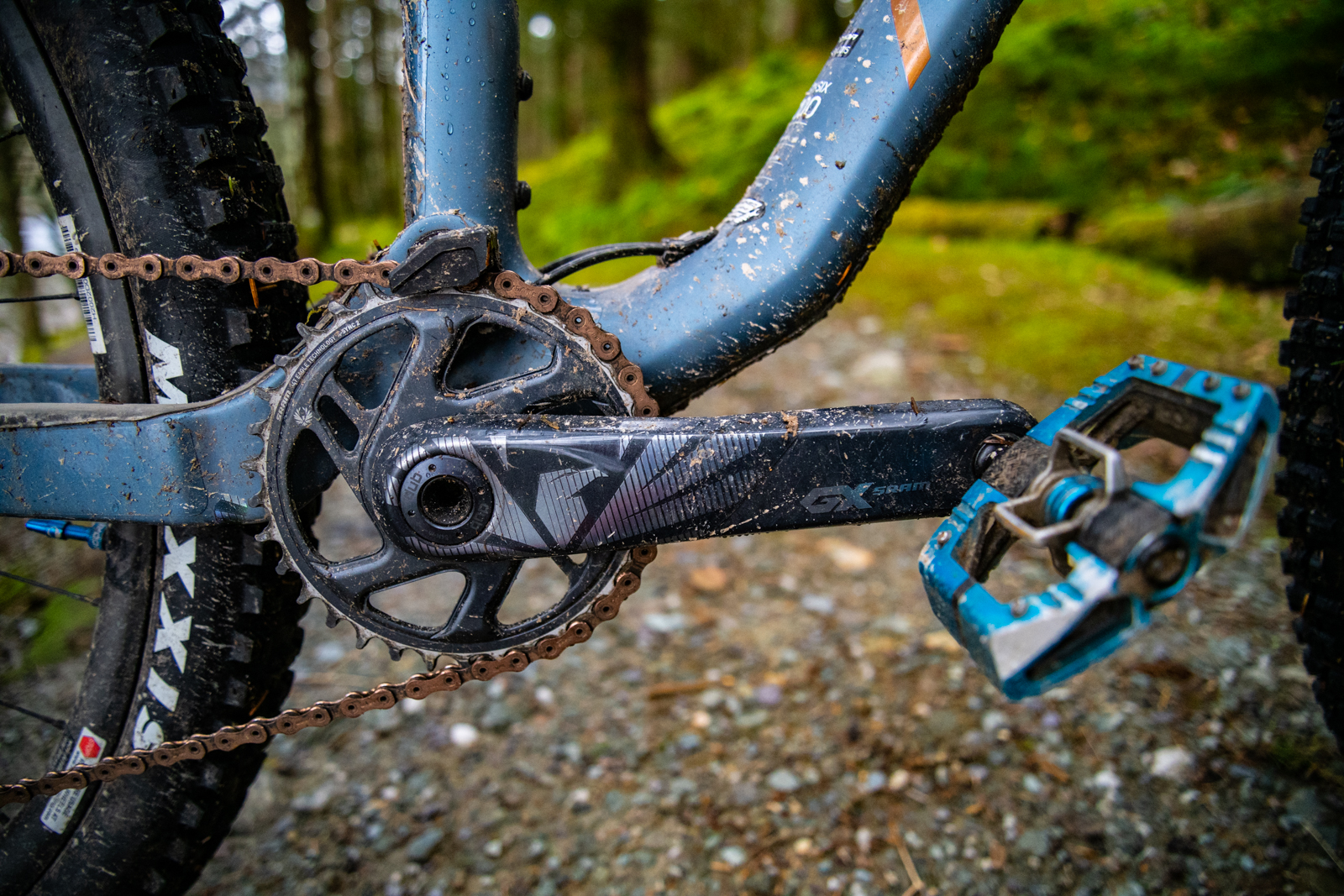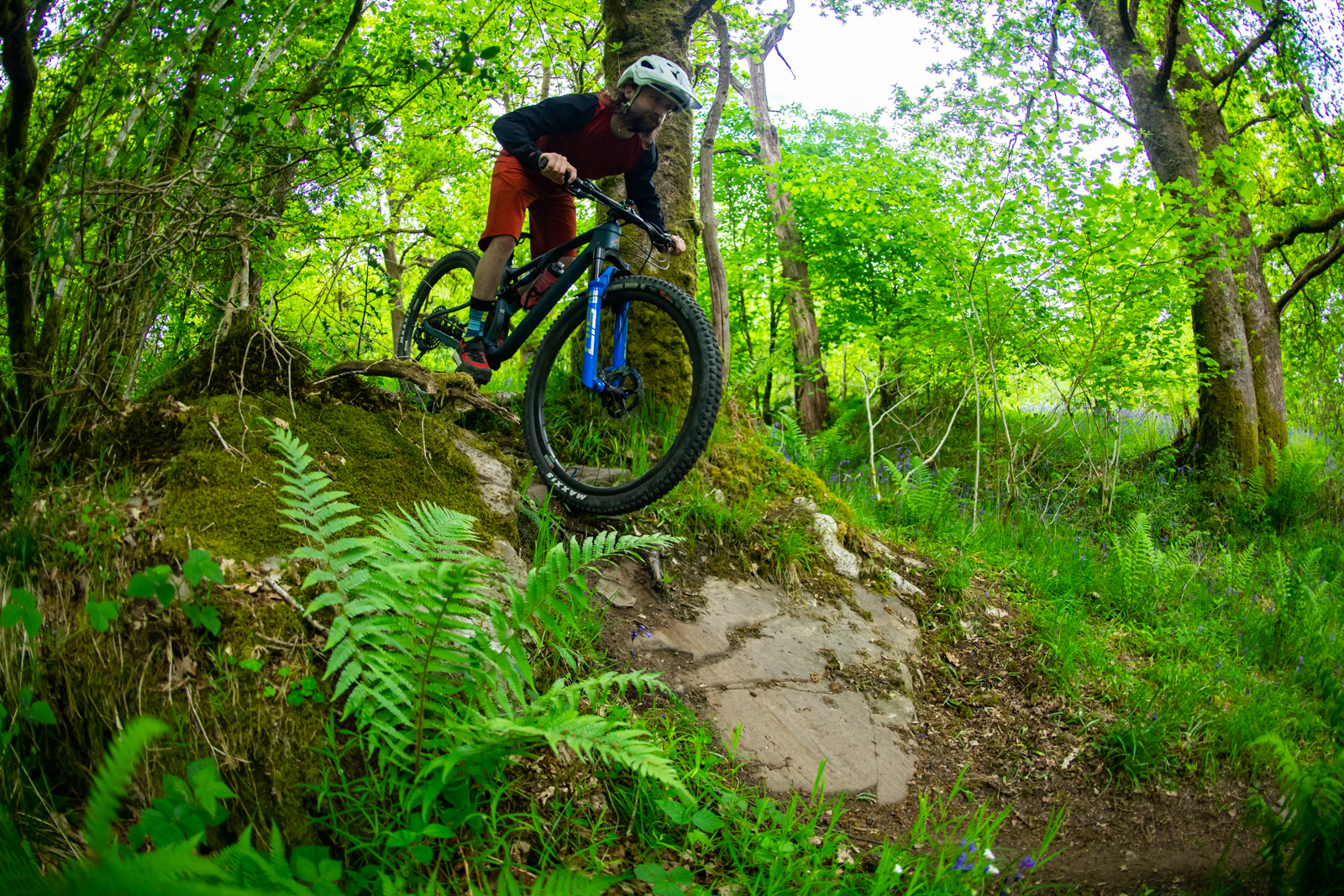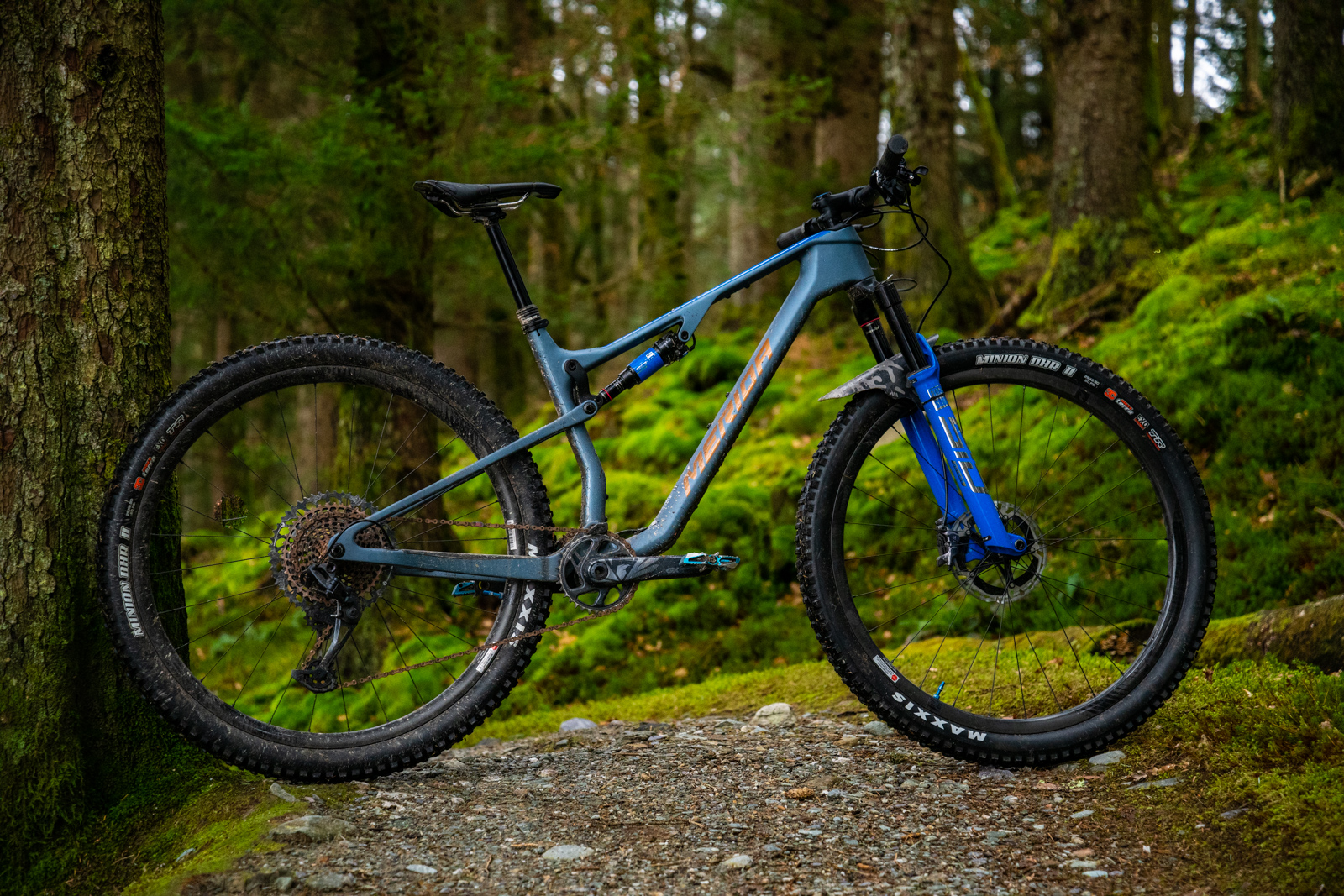With a 120mm fork fitted, does Merida’s Ninety Six 8000 become a downcountry machine rather than an XC whippet? Pete has been finding out.
Sitting one notch below the top of the Merida Ninety-Six range, the Ninety-Six 8000 sports an awful lot of spec for your money, but does the longer fork make it a more capable trail bike or blur its XC credentials? Pete has been finding out what the racey machine can do.
Key features:
- Rockshox SID Ultimate 120mm fork
- Rockshox SIDLuxe Ultimate shock
- SRAM GX Eagle 12-speed drive
- Shimano XT brakes
- Reynolds TR 309 wheels
- Merida Expert TR dropper
- £6,200 RRP
- Merida-Bikes.com

The Merida Ninety-Six has some serious cross country race-winning heritage thanks to the likes of Gunn Rita Dahle and Jose Hermida, and the 96mm platform was their go-to for more technical tracks here a hardtail wasn’t going to cut it.
In the latest revision of their cross country full suspension line up, the chassis, in this case, full carbon, got a serious tweak, with head angles in the 120mm forked models slackening out by three degrees. Reach also has lengthened but not anything like the longer, lower, slacker phenomenon of late. It needs to be remembered that the starting point was a fairly conservative XC machine.




Build and spec
The Ninety-Six 8000 is one of those 120mm forked models, and the highest spec of the two offerings. The frame is full carbon, with no chainstay/seatstay pivot to keep the weight down. The internal routing also runs through the headset to avoid having to put holes in the headtube. Blue dominates the colour scheme with bronze decals.
Talking of weight, I’m sure this bike weighs less than the box it came in… At a claimed 25.4lbs (11.57kg), there’s not a lot to this bike.
Top of the line Rockshox SID units handle the suspension, a SID Ultimate 120mm fork and a SIDLuxe Ultimate shock, both mated to a gripshift lockout lever should you need it.
Drive is provided by SRAM’s 12-speed GX Eagle with a 175mm carbon GX crank. Brakes are Shimano XT units on IceTech rotors. A 4-pot up front and a 2-pot on the rear.
Reynolds TR 309 carbon wheels are shod with a pair of 2.3″ EXO casing Maxxis Minion DHR tyres.
Merida’s own Team and Expert finishing kit rounds out the package.

Geometry
With the 120mm fork on the Ninety-Six in medium, the head tube angle drops to 67 degrees with a 75 degree seat tube. Reach drops slightly to 440mm which now matches the seat tube length. Chainstays are 435mm with a wheelbase of 1156mm.
Opening moves

With the lock out meaning compression adjustments on the dampers a non-starter, setup was even more straightforward than usual. Simply set the sag and rebound, adjust tyre pressure and lever throw to suit and get to it.
What is immediately apparent is that the Ninety-Six wants to go forward. The 34t chain ring giving good range of options combined with the 52t cassette, and the rear end transforming any thought about leg movement into drive to the ground. Stamping hard on the pedals doesn’t seem to see any wastage into the suspension, find a smooth cadence and you’ll be rewarded with a speed that feels a little to easy at first.
It doesn’t feel like a bike with 96mm travel out back, the low weight, taller stance and steeper angles making it great fun when things get slow and picky, or you need to get the bike up and over a trail obstacle. Longer, easier rides where fire road is king are a hoot too. The miles simply flashing past.
So fast is the Ninety-Six in almost every situation that the lockout, for someone who is certainly not an XC racer, seems superfluous. At no point have I found the bike to be particularly inefficient, in fact, far from it. Out of the saddle climbs see the power still just transferred to the rear tyre that digs in and spits you out at the top. Big gear gallops are a joy too.

While I wouldn’t discard the lockout to get more compression adjustment, the tune seems right for the kind of riding the Ninety-Six is designed for, you’d get a much less cluttered cockpit, less to go wrong and maybe even a slightly cheaper bike.
As the speed increases though, the foibles of the Ninety-Six start to come to the fore. Out on the trail, the Ninety-Six feels quite tall and this seems to be a hallmark of Meridas. The 440mm reach is spot on for me but the seat tube is, owing to the linkage design, just as long.
The -20 stem making for the feeling of a low front end too. With the dropper up for some fast blasting, it feels hard to shift your weight from anywhere but front-heavy, putting a lot of weight on your hands. The Merida Team carbon bars are stiff, and having a lot of weight on your hands only seems to make them feel stiffer.
It’s still early days yet and the Ninety-Six has been a good companion for hammering out the miles. I’m definitely coming to riding this bike from having ridden nothing but 140mm+ travel bikes in the past, so I’m willing to overlook this for now and hopefully some fine tuning can keep the Ninety-Six singing.
One last thing. Downcountry. I don’t know who or what that is, but for anyone that wants to ride massive distance with some big old descents thrown in, this Ninety-Six will certainly handle the distance, whereas if you’re leaning towards the descent, the OneTwenty in a higher spec guise might be more the machine for you.
You can check out the Merida Ninety-Six 8000 on Merida’s website here.
Merida Ninety-Six 8000 Review

Last time we checked in, the Ninety-Six 8000 had been the perfect companion for some sensible lockdown riding where distance took priority over vertical, certainly in the more hectic realm of the latter. I had just started to shift the riding to some spicier trails to find the limit of what this bike with a strong racing heritage could do.
Local “Wednesday Worlds” laps would see the Merida find its mark. A fifteen mile loop with six or seven high intensity efforts saw this bike really come into its own. It’s also where I’d find use for the lockout. Steep, punchy climbs with the lockout in action made all the difference, not to say the bike was inefficient without it, I am a mere mortal after all.
Fast, flowing singletrack saw the Ninety-Six really sing, especially if there were climbs thrown in. The ability to hammer the pedals with an immediate increase in forward momentum was not lost on me. The low weight and efficient rear suspension making the most of every ounce of energy I felt like exerting.

There’s a definite line to be crossed with the Ninety Six, however, and that’s not necessarily a bad thing, more just a realising that this is in fact a cross country full suspension bike with a longer fork, rather than a trail bike.
The tall stance of the Ninety-Six is arguably the main reason for this and that is mostly due to the seat tube being pierced by the link pivots. It would be hard to lower the standover with the suspension layout as it is. The relatively short chainstays, low weight and the progressive suspension do make getting the front wheel off the deck, so it does feel playful in the right situations.
While the High Rollers fitted offer excellent all-round grip and rolling, they do start to come unstuck when the grip starts to wander. On the Reynolds carbon rims they sport a rounded profile that doesn’t seem to bite that hard into anything off-camber or loose.

The suspension, for the most part, is excellent, but I have never been able to achieve full travel on the rear. The remaining portion of the 96mm available is still alien to me, and softening the shock loses the mid-stroke support and still doesn’t open up that last bit of travel. Steeper trails feel quite unnerving with the front-heavy posture on this bike, the lack of grip on the rear tyre especially exacerbating this.
With all that said, there is a clear line of where the Ninety-Six gets out of its depth and it’s important to remember that this is a cross country bike. Use it where the flow is high and you will feel like a king. I have had zero mechanicals for the duration of the test so far. Not even a puncture or skipping gears. So fast is this bike across the ground that I have even started using it for short journeys instead of the car. Yes, I know this is not a commuter but it does mean that I can link the fun bits of singletrack en route.
If you forget the word downcountry altogether and ride this bike to its strengths, then it is truly a rocket ship. If you’re obsessed with the DC word… then as before, maybe look at the OneTwenty, which, like the Ninety-Six, is excellent.
What do we think?
The Merida Ninety-Six 8000 is, if downcountry is a word that is now accepted, at the cross country end of the scale. That’s not a bad thing though. For mad high intensity blasts for someone who usually rides something with more travel, or for riding long distance where a composed chassis and suspension is needed, combined with high speed and low weight, you’d be hard-pushed to go wrong.
We love:
- Super efficient ride
- Low weight
Could do better:
- Lower standover would make this bike far less twitchy in the fun stuff





